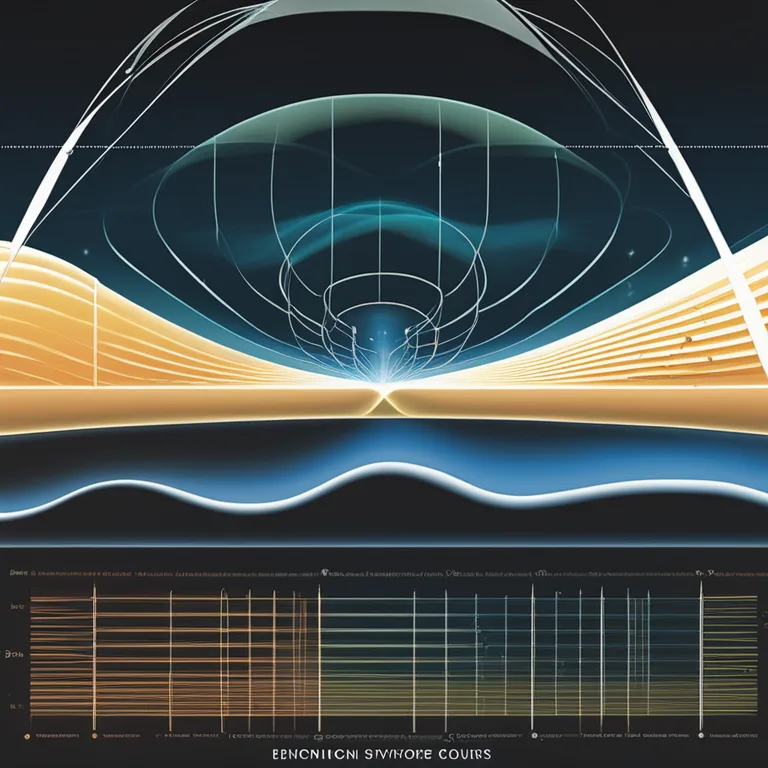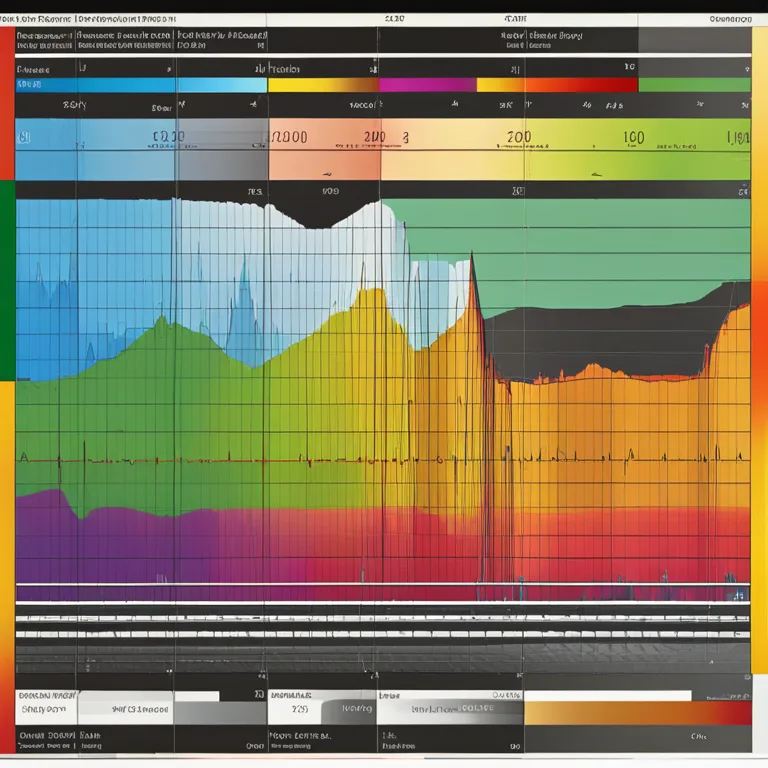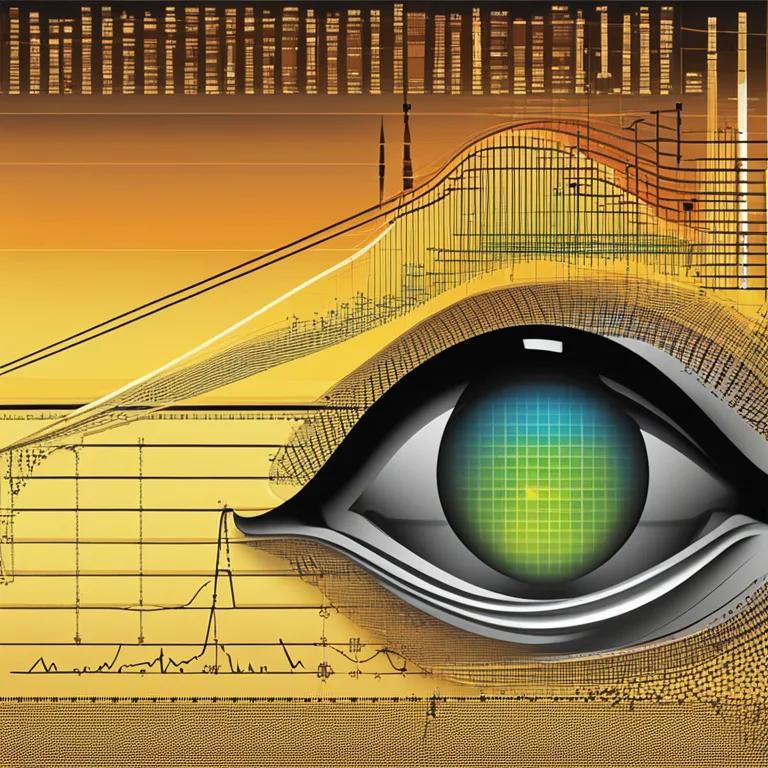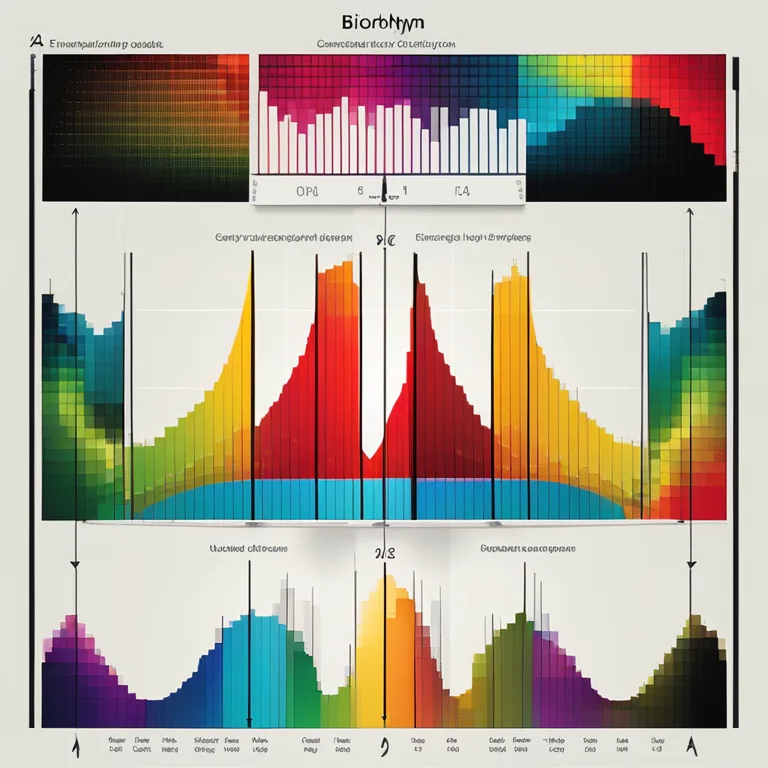
The Essence of a Biorhythm Chart
Delve into the concept of a biorhythm chart and discover its components and potential impacts on personal well-being.
article by Adrian Wallace
Introduction to Biorhythm Theory
Biorhythms are a theoretical concept that suggests humans have predictable physical, emotional, and intellectual cycles that affect performance and mood. The idea, originating in the late 19th century, proposes that from the moment of birth, each person embarks on these three distinct cycles, each with a set rhythm. The physical cycle, lasting 23 days, influences wellness, strength, and coordination. The emotional cycle spans 28 days, affecting mood, creativity, and sentiment. Lastly, the intellectual cycle, with a 33-day pattern, governs analytical thinking, learning, and problem-solving abilities. A biorhythm chart visualizes the interplay of these cycles, believed to predict the best and most challenging times for certain activities.

Anatomy of the Biorhythm Chart
A biorhythm chart represents the three main cycles as sinusoidal waves plotted on a graph, with the horizontal axis indicating the day, and the vertical axis representing the intensity of each cycle. Day zero correlates with the individual's birthdate. The physical, emotional, and intellectual waves oscillate from positive (above the axis), indicating a high phase for the corresponding cycle, to negative (below the axis), suggesting a low phase. Users interpret the chart by looking at where the waves converge, diverge, or cross the zero line – moments of transition that are thought to signal significant shifts in a person's capabilities or moods.

Interpreting the Cycles
The crux of biorhythms lies in the interpretation of the chart. For instance, when all three cycles are positive, a person might feel at their best - alert, emotionally stable, and physically robust. Conversely, days when cycles plummet into the negative could signal a need for caution, recovery, or reflection. Critical days, when a cycle crosses the midline, signal a phase of unpredictability and adjustment. By understanding these patterns, enthusiasts believe that individuals can make informed decisions about important events, workouts, or emotional commitments.

The Scientific Perspective
While biorhythms captivate many, the scientific community maintains skepticism due to a lack of empirical evidence supporting their influence. Critics argue that the theory relies heavily on anecdotal insights rather than systematic study. However, some researchers consider biorhythm theory worth investigating alongside circadian rhythms and seasonal affective disorders. With advancements in wearable technology and personalized data analytics, the intersection of biorhythms with personal health insights could become a field of interest for developers and scientists in the upcoming years.

Modern Applications of Biorhythm Charts
Today's digital age has seen biorhythm charts evolve from paper to sophisticated software, offering personalized daily readings and long-term predictions. Users can effortlessly calculate their unique biorhythms using online platforms or mobile apps equipped with algorithms designed to map out cycles accurately. These tools often integrate features like calendar syncing, allowing individuals to plan activities or recognize patterns in their physical and emotional states in conjunction with their schedules, which could be used as a form of self-reflection or personal growth.
The Holistic Viewpoint
Proponents of biorhythms argue the value of holistic self-awareness, where understanding one's biorhythm can lead to more harmonious life decisions. While not all may find credence in biorhythms, the concept promotes the deeper notion of tuning into one's body and mind. Individuals seeking balance and mindfulness might find that tracking their cycles encourages proactive health and wellness choices, serving as a reminder of the body's natural ebbs and flows.
Conclusion
Although controversial from a scientific standpoint, biorhythms persist as a source of fascination. Whether one embraces or dismisses their validity, the enduring allure of biorhythm charts is in the personalized journey they offer – an invitation to introspect and potentially sync with the body's perceived intrinsic rhythms. As society drifts further into personalized health and wellness trends, biorhythm charts may find their niche in the vast mosaic of self-improvement tools.
Published: 12/28/2023
Modified: 12/28/2023
More predictions
Come back here soon to learn more about yourself and your future


Navigating Biorhythm Cycles
Explore the concept of biorhythms, their cycles, and examples of how they influence our daily lives.


Biorhythm Compatibility: Fact Or Myth?
Explore the concept of biorhythm compatibility to discover if there's a real connection between our biocycles and relationship harmony.


Biorhythms In Humans Explored
Exploring the concept of biorhythms and their influence on human behavior and physical states.